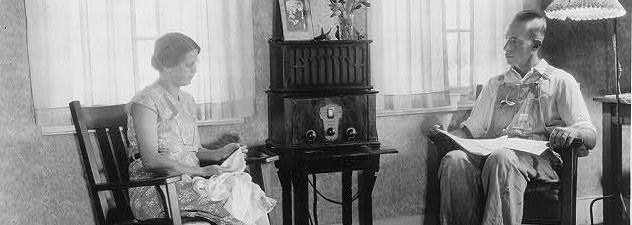1
First: Gather your Ideation resources
What can be done in your course?
Ideation is often the most exciting step in the development process. It is where we can brainstorm, refine, and ‘settle’ on a path to development. We need that here!
You will need (at least) two documents to begin the process of ideation for your ‘Teachable Moments’ podcast series development. Go grab your most current course schedule and syllabus and use these for the rest of this workshop to help with your design/planning/creation process. You will use them to locate ‘moments’ where you can make connections between learners and course content, or between learners and your expertise, utilizing a podcasting approach. Easy right!?
An Important Aside…
What is the difference between a podcast and radio?
The advent of radio in the early 20th century brought music, news and even storytelling into the homes of people all over the world. In the late 1970s and early 1980s, portable tape players reshaped the personal listening landscape, followed soon by portable CD players. Each technological move forward changed the way people engaged with “listening”. “Books on Tape” allowed for long drive listening experiences, and today, the digitization of audio allows for a massive consumption of audio at the touch of a button. But how does this translate into the user experience and what are the fundamental differences between form and function? How does the “type” of audio piece affect the user experience? People still listen to the radio, but the format known as podcasting is ever growing in popularity. Why? What is it about this new (ish) digital format that is so attractive to listeners?
The ephemeral nature of radio is an interesting characteristic, based on its requirement for the listener to be present at that singular moment to hear what is being broadcast. Famously, Orson Welles’ “War of the Worlds” broadcast could only have succeeded because of this quality. It is harder to get taken in by a sociological prank packaged as breaking news when it is pre-recorded and available for download. With radio, it is there, and then, it is gone. This does offer specific and powerful connections with audiences, if and when they catch the broadcast, however as we look towards long term knowledge sharing, this temporal existence makes for tricky learning.
The rise in popularity of contemporary podcasting has reshaped the listening landscape in numerous ways. The episodic nature is not new – people returned weekly for the next episode of their favourite radio play – but a single audio recording, does not a podcast make. It is a series; and combined with its accessibility are the features that ultimately define the format. Whether created for pleasure or as an educational tool, the act of podcasting is partly defined by the content’s accessibility. It can be accessed AND optimally, downloaded by users for consumption on their time. In fact, this feature is key to its form. It is not fleeting or ephemeral, it is catalogued and retrievable. The more reliable and easier it is to access, the better.
This is even more important in the context of education.
Next Steps: Review some examples
In each of the following examples you will hear the podcast’s theme intro and outro, used to help brand the podcast series and create a sense of familiarity. It also helps to give information to new listeners. However each episode has a slightly different production design and format. Have a listen!
Podcast Demo 1:
In this example a single host introduces the episode. However, pay attention to the use of “character” voices that serve to illustrate the quotations in the text.
Podcast Demo 2:
In this episode clip, the format includes multiple hosts and a single interview subject, recorded on location.
Podcast Demo 3:
Finally, in this episode clip you hear the “classic” one on one format. A single host interviewing a single guest.


